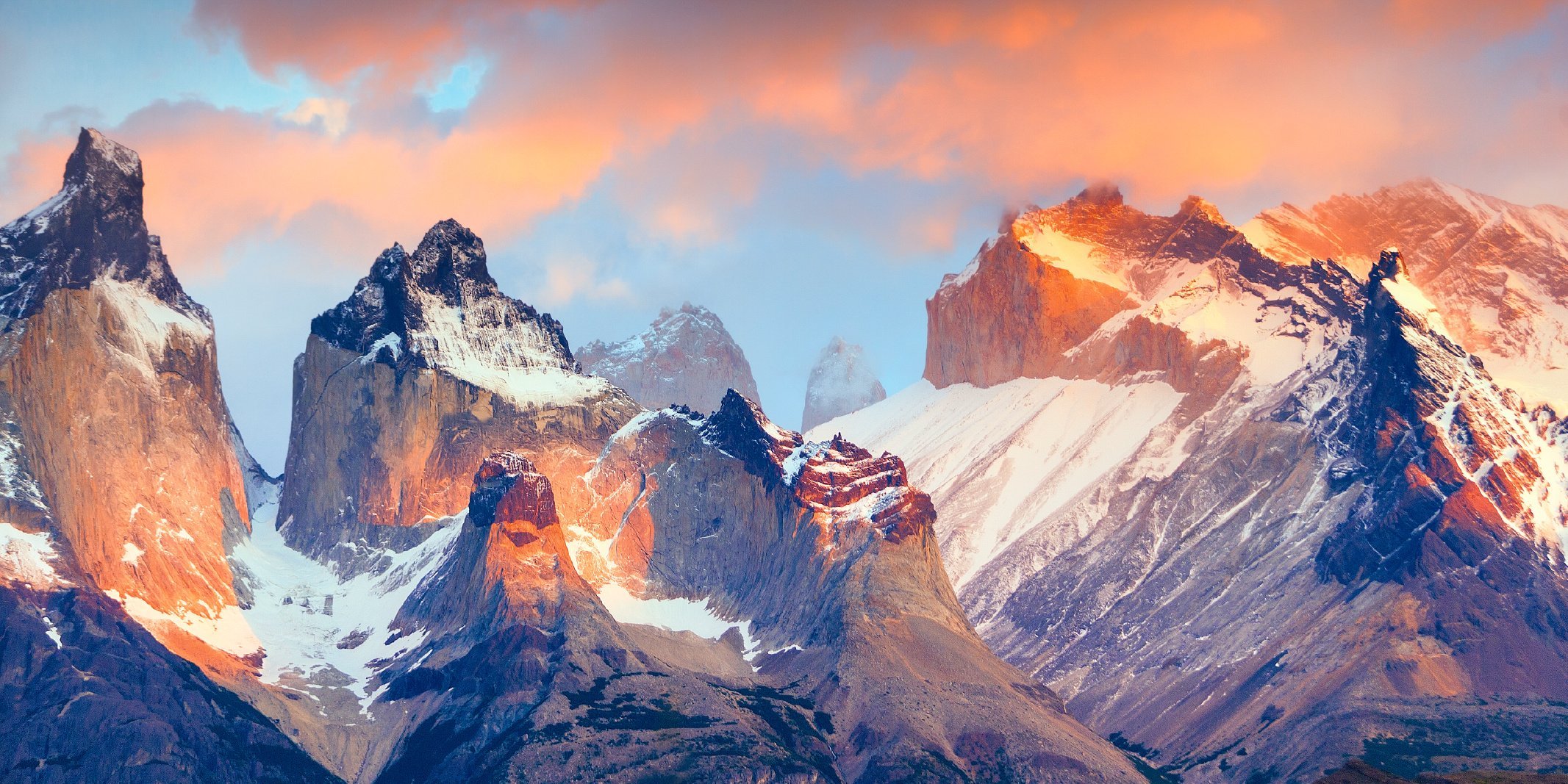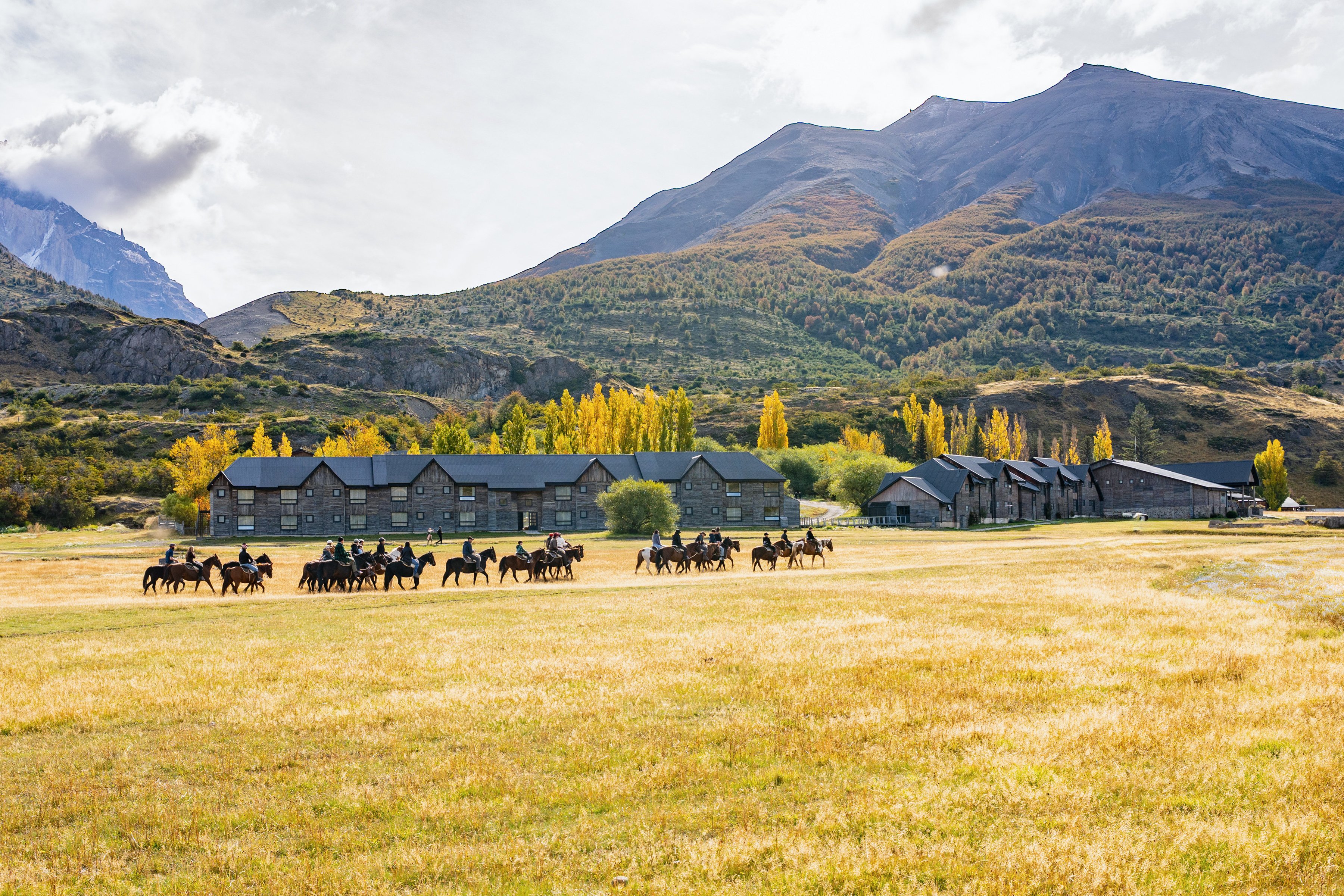The Mountains of Torres del Paine
More than merely a landscape, the mountains in Torres del Paine are a natural spectacle that evokes adventure and wonder at every glance. Have you ever wondered the names of the towering peaks that dominate the horizon? Each has a unique history and character, from the iconic Mount Paine to the unmistakable silhouettes of Los Cuernos and the magnificent Mount Almirante Nieto. Which is the queen of them all, the highest peak that challenges climbers? The summit of the majestic Mount Paine Grande attracts the most experienced climbers. However, the history of these mountains goes beyond their powerful presence. Have you ever wondered who was the first to dare to climb these virgin peaks? Discover the epic tales of the pioneers who left their mark on these rocks. Join us on this vertical journey and uncover all the secrets hidden in the legendary Torres del Paine mountains!
Geography of the Torres del Paine Mountains
Their numerosity and distinguishing characteristics can make the Torres del Paine’s individual mountains challenging to identify. Here are the most prominent mountains viewable within the national park to get you started:
Torres del Paine: The colossal granite columns that give the park its name and have become an iconic trekking destination in Patagonia include three impressive towers: South Tower (2,500 m), Central Tower (2,460 m) and North Tower (2,260 m). Millions of years ago, geological activity and glacial erosion gave rise to these formations, creating one of Chile’s most emblematic postcards. For those seeking an unforgettable experience, the Base Torres trail is a must-do challenge that offers the reward of a spectacular view of the majestic peaks reflected in the turquoise lagoon.
.jpg?width=1024&height=512&name=base_torres%20(3).jpg)
Cuernos del Paine
These stunning mountains, renowned for their sharp shape and vibrant strata, rise to 2,600 meters. The superposition of granite and sedimentary rock gives them their unique appearance and characteristic chromatic contrast. Located next to Lake Nordenskjöld, Cuernos del Paine offers one of the most impressive views in the park. From the Cuernos Lookout, visitors can capture the iconic shot of these mountains reflecting off the lake’s surface, especially at sunrise or sunset, when the colors of the sky enhance their beauty.

Mount Paine Grande
Standing 2,884 meters high, Mount Paine Grande is the highest mountain in Torres del Paine and the most challenging to climb. Its summit remains covered with snow and ice year-round, and extreme weather conditions, strong winds and low temperatures mean that its ascent is reserved only for experienced climbers. One of the most visible mountains from various points in the park, it is a natural landmark on the famous W and O Circuit routes, which attract adventurers from around the world.

Mount Almirante Nieto
At 2,670 meters high, this mountain is among the most iconic and easily recognizable from the park entrance. Its snow-capped summit and steep slopes make it a reference point for visitors. Mount Almirante Nieto is a special symbol for those staying at Hotel Las Torres, rising majestically as a backdrop to their accommodations. The Coirón Restaurant offers a spectacular view of the mountain, which changes hue throughout the day, offering a unique experience to those gazing out at it during meals and breaks.

Geology: The origin of these Patagonian mountains
This is a fascinating fact for those looking to surprise their fellow travelers: Did you know that the Torres del Paine mountains date back millions of years, when tectonic forces and glaciers sculpted the landscape? That is right! Granite intrusions that emerged from deep within the Earth were subsequently shaped by wind and ice erosion, giving rise to Torres del Paine.
One of the area’s most distinctive features is the combination of granite and metamorphosed sediment that creates the chromatic contrast of the Cuernos del Paine. These strata tell the region’s geological story, attracting geologists and curious hikers alike.

Torres del Paine history and first ascents
Mountains tell stories, and a passage through these rock giants has certainly touched many lives. Numerous adventurers have explored and climbed the Torres del Paine mountains. While the Indigenous people inhabited the area for centuries and knew these lands intimately, European explorers made the first records of their expeditions in the region.
One of the most significant historical moments in Torres del Paine occurred in 1957 when a team of Italian mountaineers led by Guido Monzino successfully climbed the North Tower.
Mount Paine Grande presented a tremendous climbing challenge. The first attempt occurred in early 1954 and ended in tragedy when Herbert Schmoll and Toncek Pangerc, members of the second Club Andino Bariloche expedition to the area, were swept away by an avalanche. Three years later, Italians Jean Bich, Leonardo Carrel, Toni Gobbi, Camillo Pelissier and Pierino Pession completed the first ascent.
Since then, Torres del Paine has become a world-renowned destination for climbers and hikers, who have produced impressive records of Patagonia.

The culture and mythology surrounding the mountains
The Torres del Paine mountains also hold deep cultural and mythological significance for the Indigenous people. The Aonikenk, a nomadic people who inhabited the region, believed the peaks were the sacred abode of spirits.
According to local legend, the Torres del Paine were three powerful stone guardians that protected the land. The Cuernos del Paine were manifestations of ancient deities of nature, whose towering presence recalled the strength of the wind, water and ice that dominate Patagonia.
Today, the mountains remain a major attraction within the natural diversity characteristic of Torres del Paine National Park. We hope that you can get that picture while visiting that inspires other hikers to explore this corner of the world.




.jpg)